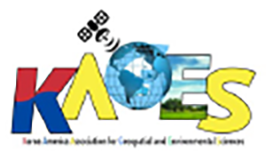Geospatial Analysis of Urban Environment
Introduction
As more than half of world population presently lives in urban areas, many cities are facing multiple social and environmental challenges. Geographical and spatial science perspectives are gaining importance in understanding the complex interactions and feedbacks between natural and human systems in the urban environment. In this context, IJGER has published the special issue as its inaugural issue. The introduction by Editor Changjoo Kim provides overview of the published articles.
Review Article
Research Articles
Measuring Spatial Health Disparity Using a Network-Based Accessibility Index Method in a GIS Environment: A Case Study of Hillsborough County, Florida
Huairen Ye and Hyun Kim
Assessing Survivability of the Beijing Subway System
Yan Li and Hyun Kim
Using Fine Resolution Orthoimagery and Spatial Interpolation to Rapidly Map Turf Grass in Suburban Massachusetts
Daniel S.M. Runfola, Thomas Hamill, Robert Gilmore Pontius Jr., John Rogan, Nick Giner, Albert Decatur, and Samuel Ratick
Measuring and Modeling of Urban Growth and Its Impacts On Vegetation and Species Habitats in Greater Orlando, Florida
Sunhui Sim and Victor Mesev
Sensitivity of Urban Water Consumption to Weather and Climate Variability at Multiple Temporal Scales: The Case of Portland, Oregon
Heejun Chang, Sarah Praskievicz, and Hossein Parandvash
Effects of Land Cover Change on Water Quality in Urban Streams at Two Spatial Scales
Sonia Singh and Heejun Chang
Impacts of Remotely Sensed Land Use Data on Watershed Hydrologic Change Assessment
Gi-Choul Ahn, Steven I. Gordon, and Carolyn J. Merry

